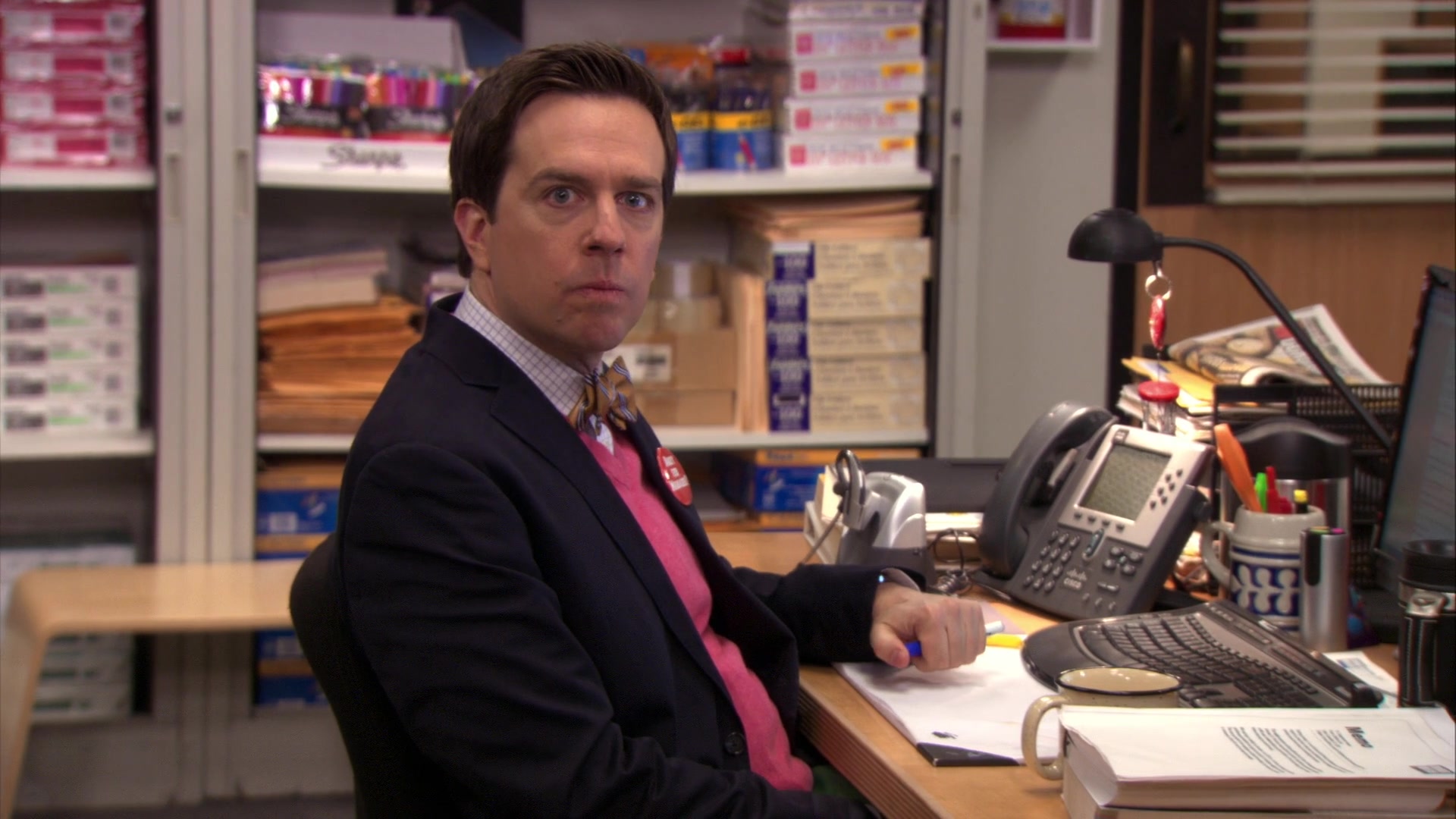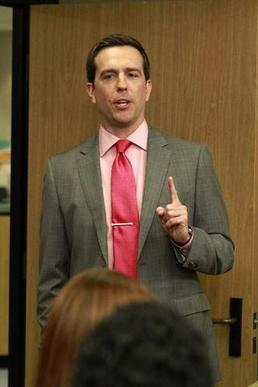Andy Bernard Auto Tune Cubase Elements Vst Instruments Free Download How To Reset Dev-c++ Environemnt Auto Tune software, free download Windows 10 Dev C++ Entering User Inputs Lil Bi Cook Download Dev C++ Change How Mouse Works Install Windows 7 On Mac Using Boot Camp. The recording industry pounced on the technology, and the first song credited (or bemoaned) for introducing Auto-Tune to the masses was Cher's 1998 hit 'Believe.' Although a success with audio.
Andy Hildebrand, an electrical engineer at first made Vehicle-Tune. Hildebrand developed approaches for interpreting seismic data and subsequently recognized which the technologies may be utilized to detect, evaluate, and modify the pitch in audio documents. Auto-Tune had been around for a minute before T-Pain came along. Invented by mathematician Andy Hildebrand, it was was released to the public in 1997 and employed to dramatic effect on Cher’s.
Fixing a Vocal Using Auto-Tune, without using autotune to fix the vocal

This article is in my e-book, “Audio Recording Boot Camp”. Get it free here
(Auto-tune is a registered trademark of Antares, but I am using the term here generically to describe all pitch correction software)

Since the beginning of recorded music we have had to deal with the fact that some vocalists do not sing quite as in tune as they or the public might want. Since then producers have been trying to find ways to improve the performance of singers on recordings. In the earliest days the solution was to try and have the singer perform better, or pick easier material, or just let the performance stand as is and let the public decide.
By the late ’80s and early ’90s, when I was first getting serious about recording, digital technology had opened up a few options for actually fixing a vocal performance. A few of the common techniques were to record a flat or sharp word into a sampling keyboard, change the pitch in the sampler, and then “play” the pitch corrected word back into the vocal track. The other common technique was to use a hardware pitch shifter, such as the legendary Eventide H3000, to digitally shift a word more sharp or flat to get it in pitch. While these techniques provided options for fixing recorded vocal tracks, they had two main drawbacks: the first is that they were extremely time consuming. It was necessary to evaluate the pitch word by word, and then make adjustments one word (or even one syllable) at a time. Getting it to sound right often required quite a bit of experimentation. The second problem is that you could only lower or raise the pitch of the entire note or syllable. If a vocal gradually changed pitch, such as starting flat and eventually getting into correct intonation by the end of the word, there were only a few options to alter this, which required very, very detailed audio magic. This all changed in 1997 with the introduction of Auto-Tune by Antares Audio Technologies.Auto-Tune was able to analyze and correct pitch problems in near real time. It also allowed pitch to be gradually adjusted within a single note. This changed everything! (Fun geek fact: the inventor of Auto-Tune, Dr. Harold (Andy) Hildebrand, developed the process based on his research using similar theories to analyze seismic activity: Earthquakes!!) Although Auto-Tune is a trademark of Antares, the term is often used generically to describe all automated pitch correction, such as that done with Melodyne by Celemony (the most popular alternative to AutoTune), or Waves Tune by Waves.
In the early days, “Auto-Tuning” was a stealth activity carried out by producers and engineers in secret late night sessions—something that needed to get done—but producers prayed the artists would never know it happened. Artists would often get furious at the idea that someone had messed with their vocal in a computer. And it would have been somewhat scandalous if the fans found out about it. Since those days, things have completely changed and producers are often met with just the opposite reactions. Nowadays, when asking a vocalist to perform a part again to improve their intonation, the artist often asks the producer to just fix it in the computer (or “just Pro Tool it” as they say). In fact, it has now reached a point where the artifact of poorly applied pitch correction (known as the Cher effect) is considered a cool effect, and extensively used by artists such as T-Pain and Kanye West.

Despite the ubiquity of pitch correction in modern recordings (and even live concerts), there are still many instances where it is not appropriate to “fix” the vocals. This is usually where the producers and the artists want to preserve the integrity of the recording for personal pride, or to be able to honestly tell their fans and the press that their vocals were not fixed. However, as the excessive Auto-Tuning craze seems to be reaching its apex, a reverse trend is growing. Artists and their fans are now starting to desire authentic performances. But the reality is that even after vocal training, some artists still need a helping hand to deliver vocal performances with good intonation. And pitch correction software can help without actually being printed on the final mix!
Everybody sings better in the choir!
There is an old but true adage that everybody sings better in the choir. When singing in a group, especially one with good singers, it is much easier, even for a poor singer, to sing with better intonation. This is something we can use to our advantage when working with a singer that needs a little extra help with intonation, but does not want to have their vocals “fixed”. (It is also worth noting that “fixing” vocals can sometimes remove some of unique character of a vocalist.)
One of the tricks we would do in the old days was to feed a keyboard into the singers headphones as part of the mix and play the melody on the keyboard while they sang. This was effective but there is a new technique that is actually easier for both the producer and the singer. The technique is very simple but very effective. If I am working with a vocalist who is having trouble with pitch/intonation, I will often record a few vocals tracks with them and send them away while I use pitch correction software to make every note of the vocal track in tune. After that, I will get the singer back in the studio, but now I have them sing the new vocal take while listening to one, or several, pitch-corrected vocal tracks in their headphones. This gives them a very similar benefit to singing in a choir by allowing them to adjust their intonation to the voices around them. This is something that most vocalists do naturally without even thinking about it. Now the vocalist is free to concentrate on the emotional energy of the performance and less on the intonation.

If they are still having trouble, I will often double the most difficult notes with another instrument such as guitar or piano (or another voice). One of the great things about this technique, aside from the fact that it can be very effective, is that artists who are staunchly anti-Auto-Tune are usually completely fine with this technique—even when they know exactly what you have done. It’s just a modern variation of the old trick of playing the vocal melody on a piano or synth along with the singer to help them with their pitch. In the end you can wind up with a vocal track that the singer and all involved can feel proud of—and rightly claim as 100% authentic!
Somewhat unrelated, but if you have made it this far I will throw in one more bit of advice: if you are going to be using pitch correction software on the final vocal, do not “Auto-Tune” on autopilot and fix every note. Much of the energy and emotion of a song comes from vocalists singing slightly above or below the pitch at various times. The vocalists on some of the biggest selling albums of all time would have never made it past the “fixing” of some current overzealous producers.
Check out our upcoming courses HERE
| 'Rider Pt. 2' | ||||
|---|---|---|---|---|
| Single by G-Unit | ||||
| from the album T·O·S (Terminate on Sight) | ||||
| Released | April 22, 2008 | |||
| Recorded | 2008 | |||
| Genre | Hip hop, gangsta rap | |||
| Length | 3:02 | |||
| Label | G-Unit/Interscope | |||
| Songwriter(s) | Curtis Jackson, David Brown, Christopher Lloyd, Marvin Bernard | |||
| Producer(s) | Rick Rock | |||
| G-Unit singles chronology | ||||
| ||||
'Rider Pt. 2' is a song recorded by G-Unit. It was released in April 2008 as the second single from their second album, T·O·S (Terminate on Sight). The song was featured on G-Unit's mixtape, Elephant In The Sand and the beat was originally used in Where Them Hammerz At? by 40 Glocc,[1] and he was also featured on a version of Rider Pt. 2. 50 Cent uses the Auto-Tune effect in the intro and chorus of the song. The track is a diss toward fellow East Coast-rapper Fat Joe. The clean version removes all profanity while the video version removes all profanity and violence. Almost half of the lyrics were censored.
Music video[edit]
Andy Bernard Auto-tune
The Rider Pt. 2 video premiered Wednesday May 28 on BET. Young Buck's verse was excluded on the video despite his verse being included on the album.
Track listing[edit]
| # | Title | Time |
|---|---|---|
| 1 | 'Rider Pt. 2 (clean)' | 2:51 |
| 2 | 'Rider Pt. 2 (dirty)' | 2:51 |
| 3 | 'Rider Pt. 2 (instrumental)' | 2:51 |
| 4 | 'Rider Pt. 2 (clean, extended)' | 3:02 |
| 5 | 'Rider Pt. 2 (dirty, extended)' | 3:02 |
Chart performance[edit]
| Chart (2008) | Peak position |
|---|---|
| U.S. Bubbling Under Hot 100 Singles[2] | 22 |
| U.S. BillboardHot R&B/Hip-Hop Songs | 3 |
In popular culture[edit]
Rider Pt. 2 was used as the entrance song for Pete Sell at UFC 96.
Alternate versions[edit]
The official remix of the single is called 'Así Soy (Rider Pt. 2 Official Remix)', and it features the reggaeton duo Wisin & Yandel. It was released on June 2008. G-Unit made a surprise appearance and performed the remix with Wisin & Yandel at Solid Fest in Caracas, Venezuela on January 31, 2009.
Rider Pt. 2 is the second part of the Rider songs. The first part is known as Rider 4 Real. The track includes different lyrics and a different beat. The track first appeared on the Return of the Body Snatchers mixtape by G-Unit. A music video was made of Rider 4 Real.
'Rider Freestyle' is a version recorded by rapper KRS-One in 2008.
Andy Bernard Autotune
Another remix has the same beat as 'Rider Pt. 2' and includes excerpts of G-Unit's verses from 'Pt. 2' but also features rappers Papoose and Lil' Kim.
Video shoot gallery[edit]
References[edit]
- ^40 Glocc - Where them Hammerz At?
- ^BillBoard. Artists Chart History - G-Unit, Singles. BillBoard. Accessed July 16, 2008.
External links[edit]
- Lyrics of this song at MetroLyrics
